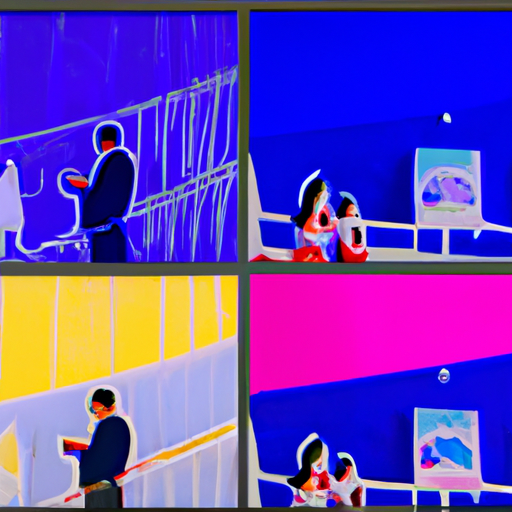-
Table of Contents
- The Role of Illustration in Architectural Visualization
- 1. The Power of Illustration in Architectural Visualization
- 2. The Role of Illustration in Marketing and Promotion
- 3. The Evolution of Illustration Techniques in Architectural Visualization
- 4. The Future of Illustration in Architectural Visualization
- Summary
The Role of Illustration in Architectural Visualization
Architectural visualization plays a crucial role in the design and construction industry. It allows architects, designers, and clients to visualize and understand the final outcome of a project before it is built. While computer-generated imagery (CGI) and 3D modeling have become popular tools for architectural visualization, the role of illustration should not be overlooked. Illustration brings a unique and artistic perspective to the visualization process, enhancing the communication of ideas and creating a more immersive experience for all stakeholders involved.
1. The Power of Illustration in Architectural Visualization
Illustration has been used in architectural visualization for centuries, dating back to the Renaissance period. It has the power to convey emotions, atmosphere, and a sense of place that can be challenging to achieve with other visualization techniques. By combining technical accuracy with artistic interpretation, illustrations can bring architectural designs to life and evoke a strong emotional response from viewers.
One of the key advantages of illustration is its ability to capture the essence of a design concept. Architects often start the design process with hand-drawn sketches to explore different ideas and concepts. These initial sketches can be transformed into detailed illustrations that showcase the unique features and character of a building. Illustrations allow architects to communicate their vision effectively and engage clients and stakeholders in the design process.
Furthermore, illustrations can create a sense of nostalgia and timelessness. They can transport viewers to a different era or evoke a particular architectural style. This can be particularly useful when designing buildings in historic or culturally significant areas. By using illustrations, architects can demonstrate how their designs fit within the existing context and pay homage to the architectural heritage of a place.
2. The Role of Illustration in Marketing and Promotion
Illustrations are not only valuable during the design and construction phases but also in marketing and promoting architectural projects. They can be used in brochures, websites, and presentations to showcase the unique features and selling points of a building. Illustrations have the power to captivate potential buyers and investors, helping them visualize themselves in the space and understand the benefits of the project.
Real estate developers often use illustrations to create a sense of exclusivity and desirability around their projects. By commissioning high-quality illustrations, developers can present their buildings in the best possible light, emphasizing their unique design elements and luxurious amenities. These illustrations can be used in advertising campaigns and sales materials to attract potential buyers and generate interest in the project.
Case Study: The High Line, New York City
The High Line, an elevated park in New York City, is a prime example of how illustrations can play a significant role in promoting architectural projects. Before its construction, the Friends of the High Line, a non-profit organization, used illustrations to communicate their vision for the park. These illustrations showcased the park’s unique design, lush greenery, and stunning views of the city skyline. The illustrations helped generate public support and funding for the project, leading to its successful realization.
3. The Evolution of Illustration Techniques in Architectural Visualization
With the advancement of technology, the techniques used in architectural illustration have evolved significantly. While traditional hand-drawn illustrations still hold their charm, digital illustration tools have become increasingly popular in recent years. These tools offer architects and designers greater flexibility and efficiency in creating illustrations.
Computer-generated illustrations allow for more precise and realistic representations of architectural designs. They can incorporate accurate lighting, textures, and materials, providing a more immersive experience for viewers. Digital illustration tools also offer the advantage of easy editing and modification, allowing architects to make changes to their designs quickly.
Furthermore, the integration of 3D modeling and illustration techniques has opened up new possibilities in architectural visualization. Architects can create 3D models of their designs and then apply illustration techniques to enhance the visual impact. This combination of 3D modeling and illustration can result in stunning visuals that effectively communicate the design intent.
4. The Future of Illustration in Architectural Visualization
As technology continues to advance, the role of illustration in architectural visualization is likely to evolve further. Virtual reality (VR) and augmented reality (AR) are already making their way into the architectural industry, offering new ways to experience and interact with architectural designs. Illustration can play a crucial role in creating immersive VR and AR experiences, allowing users to explore and visualize spaces in a more engaging and realistic manner.
Additionally, the integration of artificial intelligence (AI) in architectural visualization holds great potential for the future of illustration. AI algorithms can analyze architectural designs and generate illustrations that align with specific design styles or client preferences. This can save time and effort for architects while still maintaining the artistic quality of the illustrations.
Summary
Illustration plays a vital role in architectural visualization, bringing a unique artistic perspective to the design and construction process. It has the power to convey emotions, capture the essence of a design concept, and create a sense of nostalgia and timelessness. Illustrations are also valuable in marketing and promoting architectural projects, helping to attract potential buyers and investors. With the evolution of technology, the techniques used in architectural illustration have advanced, allowing for more precise and realistic representations of designs. The future of illustration in architectural visualization holds exciting possibilities, with VR, AR, and AI expected to play significant roles. By embracing illustration as a powerful tool, architects and designers can enhance the communication of their ideas and create more immersive experiences for all stakeholders involved.
